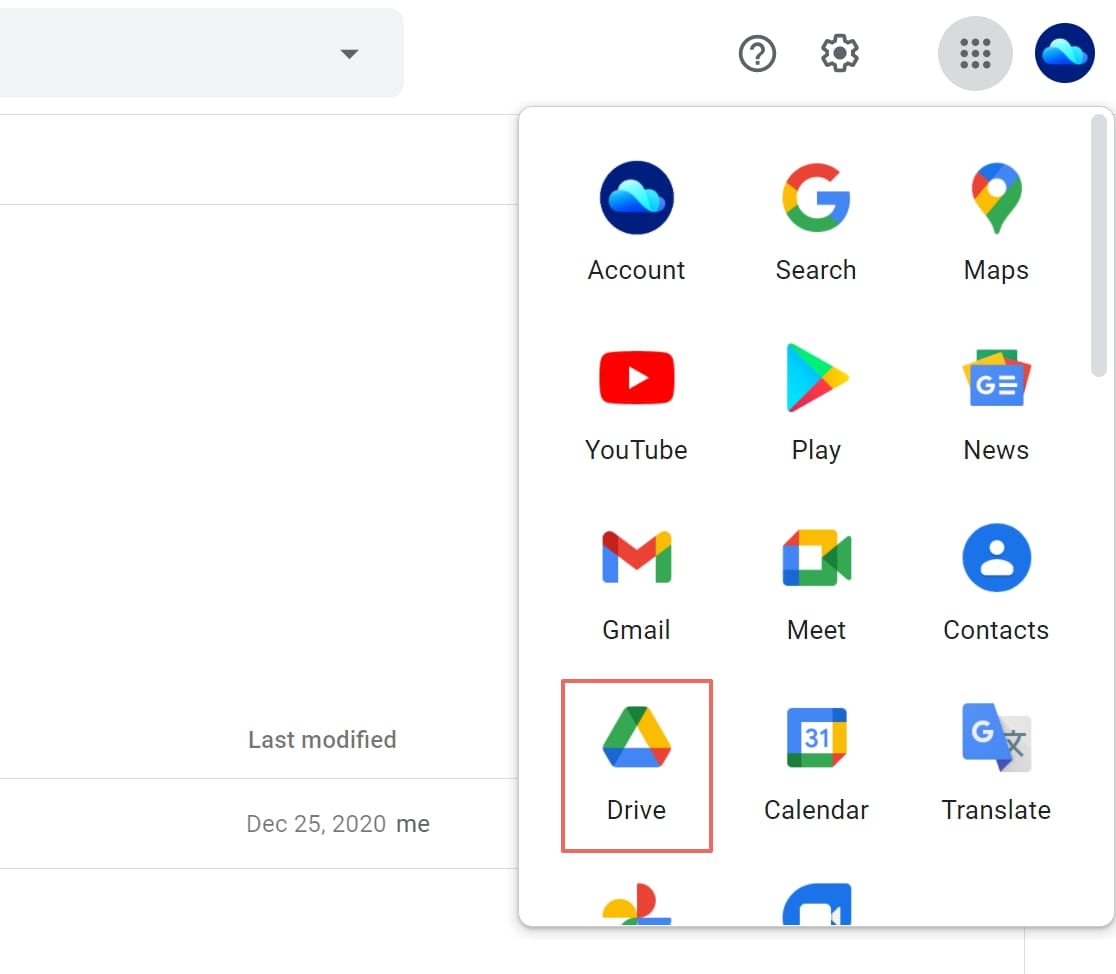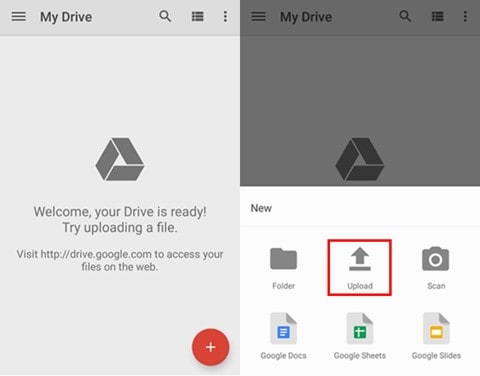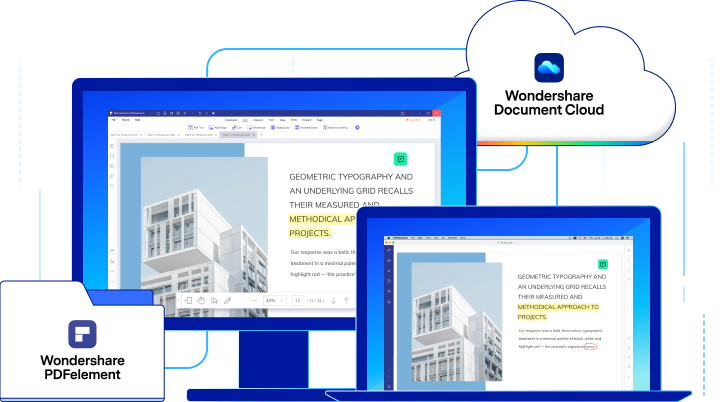Nowadays, disk space has become a premium because all of us are inundated with files from various sources. It comes to a point where your hard drives and solid-state drives are so full of data that your computer no longer works as it should. One solution is to move your files to a cloud storage service like Google Drive. You can easily learn how to save a PDF to Google Drive or save any other file type and free up valuable space on your local storage media. This article focuses on how to save PDF in Google Drive, but you can use the same process for any other file, document, video, or audio file as well. Let’s look at the process in detail.
In this article
How do I save a PDF to Google Drive?
Learning how to save a PDF to Google Drive is, as they say, as easy as falling off a log. That said, there are actually a few different ways in which this can be done on a desktop device. In addition, there are other ways to do it if you’re using a mobile device like a smartphone or a tablet. So, how do you save a PDF to google drive may vary with the device you use. Let’s explore some practical methods to do so:
Method 1: How to save PDF to Google Drive on Desktop?
In this method, we’ll use your local browser tab to save a PDF to Google Drive on Mac, PC, or Linux.
step 1 Launch a browser tab and sign in to your Google account. You can set it up quickly if you don’t have one already, but since most of us will have a Gmail account, Drive will be available by default.

step 2 To open Drive in a new tab, click the grid icon (nine dots in a grid layout) in any browser tab after logging in to Google. From there, select Drive to open Google Drive in a new tab.
step 3 There are now two ways to save a PDF to Google Drive from here.
a. The first way is to go to your file manager application (Explorer, Finder, etc.) and drag the PDF file and bring it over the browser icon in the task tray or Dock. When the browser tab with Drive opens, just drop it in there and watch it upload in the bottom-right corner of your screen.

b. Another way is to click the ‘+ New’ button on the top left or the small arrow next to My Drive above the main file list view. Both will show you a menu with various options, from where you can choose ‘Upload files’ or ‘File Upload.’ Navigate to your PDF file, select it, and then confirm the selection to start the upload.
Method 2: How to save a PDF in Google Drive using the Drive for Desktop Client?
Another way to save PDF to Google Drive on a desktop is to install the Drive for Desktop client. You can download it from Google’s servers and use it like any other folder on your computer. Whenever you’re online, it will sync with your Drive cloud account. However, please note that this feature is reserved for administrators of G Suite accounts only, not individuals.
step 1 Download the setup file for Windows or the DMG for Mac. This has to be done for each computer on the network.
step 2 Run the installer on silent mode using CMD or Terminal with the following commands:
In Windows: GoogleDriveFSSetup --silent
In Mac: hdiutil mount GoogleDrive.dmg; sudo installer -pkg /Volumes/Install\ Google\ Drive/GoogleDrive.pkg -target "/Volumes/Macintosh HD"; hdiutil unmount /Volumes/Install\ Google\ Drive/
step 3 Once the Drive for Desktop client is installed, users will be able to see a Google Drive folder in their local drive. They can save and fetch documents from there just as with any other local folder. It will sync whenever they’re online, and their business Drive accounts will be updated to reflect the changes.
Method 3: How to save PDF on Google Drive shared folders?
You can also save a PDF file to Google Drive shared folders. The process is exactly the same as Method 1. However, you will need to be inside the shared folder before uploading a file. You can also add a file to My Drive and then move it to a shared folder.
The only prerequisite - in case you are not the owner of the shared folder - is that you must have Editor permission. You cannot add files to a shared Drive folder if you are a Viewer or Commenter. Other than that, it’s the same as uploading PDFs to your own Google Drive folders.
Method 4: How to save PDF in Google Drive on Mobile?
Since the mobile interface is very different, the method to upload PDF to Drive is also slightly different. First, you will need to install the Drive app on your device. Here’s what to do on both iPhone/iPad and Android devices:
step 1 Install the Google Drive mobile app for iOS or Android.
step 2 Tap the Drive icon to launch the app.

step 3 Inside, tap the + symbol, then tap the Upload option from the choices provided.
step 4 Select your file in your file manager and tap Upload again. The file will be uploaded to whatever folder you are currently in.
“Google Drive Save PDF” methods are diverse. You can do this with any other file type, including media files such as videos and audio tracks. Once they’re saved there, you can access and save PDF from Google Drive anywhere else after signing in to the same Google account.
What can I do with my uploaded files in Drive?
Google Drive allows you to open the file or preview it, share it with others using a secure permission-based link, co-edit with others (on Google app files only), download back to desktop or mobile, move to another folder or make a copy, delete it from Drive, publish to the web, see the version history and restore older versions, make it available offline, rename it, and so on.
Unfortunately, Google Drive can’t open a PDF file. It will merely show you a preview of the contents. Also, most of the add-ons for Drive are only PDF readers, not PDF editors. Some will allow you to overwrite content on top of existing text, etc., but you won’t get a professional look. For better results, consider using products from the Wondershare ecosystem of software applications for desktops and online use.
Uploading PDF to Google Drive alternative - Wondershare PDFelement Cloud
Designed for PDFs, Wondershare PDFelement Cloud is a secure cloud storage service with a special feature that allows you to create electronic signatures, apply them to documents, and even send PDFs to multiple people for signature collection in a couple of different ways. Here’s how it works:
step 1 Create a login at the Wondershare PDFelement Cloud website.

step 2 In the Home tab, click Upload Files.
step 3 Select PDFs from your local hard drive or external drive, or even mobile memory, and hit Upload to confirm. The files will be visible in the Recent Document Activity section of the Home tab or directly in the Document tab.
That’s it! Once the PDF is stored on the cloud, you can do the following:

- Open and read the contents of the PDF
- Move file to your local storage
- Send the PDF for signature collection
Option 1: Send for Signatures - Use this when you need several people to put their electronic signatures on the same copy of a PDF
Option 2: Bulk Send - Use this when several people have to sign individual copies of a PDF - Download the file to the same or another device
- Rename the PDF and assign a different name
- Copy and paste the file to local storage
- Delete the file from the cloud server
Since you cannot edit PDFs in Wondershare PDFelement Cloud, the company has integrated cloud capabilities in the new PDFelement Pro DC for Windows.
PDFelement Pro DC - work offline or access PDFelement Cloud PDF files
Wondershare PDFelement Pro DC
Simplify your Workflow with the PDFelement Cloud.

Essentially an offline PDF editor, PDFelement is integrated with certain cloud capabilities, such as being able to save a PDF, download a PDF, or send a PDF for signature collection. And you can do all this by triggering the actions from within PDFelement.

Here are its offline features:
- You can fully edit a PDF file and add, remove, or modify any element. This includes text content, images, tables, footers/headers, watermarks, embedded file attachments, hyperlinks, page numbers, and everything else.
- You can create PDFs from numerous source files and convert PDFs to various other file types as well.
- Use the extensive annotation tools to convey notes and other comments with other collaborators of a PDF document.
- Protect your PDF workflows with strong encryption algorithms for access, editing, printing, and copying.
- Create forms from scratch or from templates, fill and sign forms, convert scanned forms to editable PDFs, and even pull form field data from a batch of forms.
- Perform advanced OCR in over 20 different languages - accurately and with speed.
- The Batch Process feature lets you process large workflows in a short amount of time, with options like conversion, watermarking, encryption, data extraction, etc.
Here are its online integration features:
Aside from its online capabilities, you can also do the following in PDFelement:
● Upload the current file to Wondershare Cloud

Use the Share button to upload the file. When you choose Wondershare Cloud, it opens your cloud account in a new browser tab and uploads the file that’s open in PDFelement.
● Download and edit a file from Wondershare Cloud

To fetch and open a PDF for editing, just use the File → Open → From Wondershare Cloud menu option to select and then automatically download and open the file for editing in PDFelement.
● Trigger Wondershare Cloud to initiate the document signing process

Clicking Protect → Electronic Signature in PDFelement will cause a new browser tab to open and log you in automatically, where you’ll be taken to the Sign tab. Once you’re there, you can initiate one of the two signing processes mentioned earlier.
Some final thoughts on productivity enhancement
There are some very productive users for Google Drive, especially if you use it for your business needs. Drive is easily available and free storage is provided to all users. On the other hand, it doesn’t handle PDF workflows that easily, and even the third-party tools available as add-ons leave a lot to be desired. For that reason, we recommend Wondershare PDFelement Cloud as a better alternative. Not only do you get free cloud storage but also the ability to send PDFs to others to get their electronic signatures. The tool even allows them to create a new electronic signature that they can use to sign the document you send them.
The real power of PDF and cloud, however, comes with the combination of PDFelement and PDFelement Cloud. The all-new PDFelement Pro DC is a monster when it comes to handling PDFs, and the online integration features allow you to work seamlessly between your desktop and the cloud. That means you can basically work from anywhere and on any device you want. This immense freedom that a multi-terminal experience brings to the table is unparalleled. It will make you and your team far more efficient and productive than ever, allowing you to work from different locations and across multiple operating systems with zero conflict and zero worries about compatibility and other issues.
Even if you only need Wondershare PDFelement Cloud as a standalone service, it can tremendously tilt things in your favor in terms of contract signing, vendor agreements, internal employee notifications, job offer letters for remote employees, non-disclosure and confidentiality agreements, and essentially anything that requires an electronic signature in order to be legally valid. Try it out today with a free account and see how it can transform your PDF and signature workflows.
Conclusion
Google Drive is easily available and offers sufficient free storage, so it has billions of users worldwide. Its significance for cloud document management is remarkable since you can upload or download PDFs to Google Drive with utmost convenience.
Still, the way Google Drive handles PDF workflows isn’t up to the mark in professional settings, and even the third-party tools available as add-ons leave much to be desired. For that reason, we recommend Wondershare PDFelement Cloud as a better alternative.



